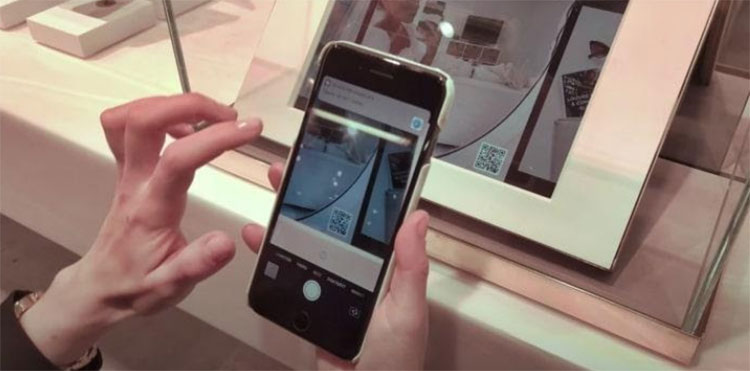How did IKEA Improve Customer Experience by Going Paperless?

A satisfying IKEA customer shopping expedition involves several integrated components, all of which come together to create a pleasing result. The story begins when a customer steps through the doors of their region’s IKEA store. Although they are never quite sure what treasures they will find, they know they will be treated to a feast of vibrant colors, textures, and designs.
As customers stroll through the aisles, they happen upon a series of well-coordinated displays that showcase typical home living spaces. Living rooms, dining rooms, bedrooms, kitchens, and even smaller nooks and crannies are featured. Nearby, customers find shelves and bins containing eye-catching display items they may want to take home.
Faced with an abundance of décor choices, many customers become inspired to give one or more rooms a brand-new look. With so many enticing options, however, they often seek professional assistance from an IKEA design consultant.
The Acclaimed IKEA Design Service
IKEA’s trained design consultants can help customers to plan multiple room designs. Not surprisingly, the retailer’s kitchen design consultation is a heavily requested service.
This popular collaborative session can take place at the store or via an online portal. Either way, the design consultant provides the customer with a 3D kitchen design plan plus a corresponding parts list to streamline purchases.
An Inefficient System’s Negative Impacts
Historically, IKEA’s design consultation desk has attracted multiple shoppers hoping to secure a few minutes with the often-harried design consultant. Customers clutched their paper tickets, afraid to leave the area and perhaps miss their spot in the queue. As the clock ticked away, customers often grew increasingly frustrated and impatient.
The Source of Customers’ Frustration
Customers have long had minimal tolerance for retail store delays. Maybe they have made a day-long trip to a global lifestyle retailer such as IKEA. Alternatively, they might visit a locally owned retail store near their home.
Regardless of the retail setting, customers expect an enjoyable shopping experience and a delay-free checkout. When they require sales assistance, they often become impatient if they are forced to wait for it.
The rapid rise of e-commerce has magnified customers’ expectations for instant gratification. Ordering merchandise online has become virtually effortless, and orders are generally processed with lightning-fast speed. In many cases, customers can often opt to receive their shipments overnight, or even within a few hours. During the height of 2020’s COVID-19 pandemic, retailers streamlined their operations for even faster delivery to customers locked-down at home.
In 2021, customers now expect brick-and-mortar retailers to deliver that same impeccable service. Many retailers are implementing targeted technology to enhance customer shopping experiences that set the stage for long-term customer loyalty.
IKEA Implements Ombori Grid’s Queue Management Solution
IKEA astutely recognized that it was necessary to take a 21st-century approach to the design consultation scheduling issue. The Company engaged the services of Ombori Grid, a technology solutions innovator with demonstrated queue management success. The virtual Ombori Grid infrastructure enables customers to schedule their design consultations and customer service requests via their smartphones.
To book an in-store or online consultation, the customer can either use an interactive display while shopping at their IKEA store. Alternatively, they can visit IKEA’s website. After they finalize their appointment, their smartphone receives an immediate confirmation.
With that process completed, the customer can browse through the store until their appointment time arrives. IKEA sales associates utilize the staff interface function to ensure that the queue runs as intended.
“We are always exploring new ways to elevate both physical and digital experiences at IKEA Saudi Arabia and Bahrain. Introducing the new queuing solution with Ombori that caters for the ever-evolving customer expectations has not only allowed IKEA customers to have better accessibility and convenience to book and engage with our co-workers both virtually and physically, but also granted the needed visibility that helped us diffuse potential frictions that our customers might encounter while planning and shopping at our stores,” explains Rami Rihani, Country Customer Experience Manager for IKEA Saudi Arabia and Bahrain.
IKEA’s Queue Management System Advantages
The technology-based queue management system delivers benefits for everyone involved in the retail setting. Customers enjoy more satisfactory shopping experiences. IKEA and its store employees also receive several benefits.
Benefits to Customers
Retail customers’ shopping preferences can vary considerably. Many shoppers visit the store only briefly to search for certain items or pick up products they purchased through the retailer’s website. IKEA’s Click & Collect service accommodates customers who opt for the curbside pickup choice.
Then there are those who want to speak to an expert in order to gather all information and various options. For those, the more personalized experience of a consultation, offered both online via video call or in-store with an IKEA team member, is the way to go.
Other customers prefer a more leisurely shopping trip. They meander through the aisles, hunting for eye-catching products or creating a vision for their home living space. If they can roam around the store without delays, they may extend their visit and discover more items to buy. When the customer has a positive shopping experience, they will probably visit the store again.
Benefits to IKEA
The new virtual queue management system provides IKEA with three advantages. First, the Company’s implementation of the program shows its willingness to adopt new technology to solve its operational problems. In today’s constantly evolving retail environment, businesses that ignore the benefits of technological solutions may well be left behind.
The virtual queue management system also makes it easier for customers to reach IKEA’s checkout stations. When customers can pay for their merchandise without delays, cashiers can complete a higher number of sales transactions. This provides the store with additional revenues.
Finally, a virtual queue management system banishes annoying paper tickets forever. IKEA wants to completely eliminate paper waste from its stores, thus decreasing the harmful effects on the environment. This goal reflects IKEA’s dedication to sustainability in every facet of the Company’s operations.
Taking a slightly different perspective, Ombori Founder and CEO Andreas Hassellof also relates the benefits of the new virtual queue management system. He presents his points on his Forbes Technology Council Profile Page.
Benefits to IKEA Employees
IKEA employees also realize three benefits from the virtual queue management system. When customer appointments flow at a predictable pace, employees can provide optimum service without feeling time pressure.
IKEA employees who are stocking shelves, or who are performing other sales floor tasks, do not have to weave through clusters of customers near the service desks. This leads to improved employee productivity.
Employees also receive a more intangible (but very important) benefit. When employees can utilize the latest technology to complete their work, they can devote time to higher-level tasks rather than managing customer traffic flow.
In turn, employees may feel more valued, which is reflected in a stronger commitment to customer service. In addition, IKEA employees may feel more connected to the IKEA vision: “to create a better everyday for all people impacted by our business.” This ideal outcome may result in increased employee engagement and longer tenure with the Company.
IKEA’s Virtual Queue Management System: A Success Story
Currently, the IKEA virtual queue management system is in operation at IKEA stores in Saudi Arabia and Bahrain. Other regions’ stores will gradually be integrated into the mix.
Rami Rihani, the IKEA Saudi Arabia and Bahrain Country Customer Experience Manager, recognizes the benefits of this innovative new system. “We are always exploring new ways to elevate both physical and digital experiences at IKEA Saudi Arabia and Bahrain.
“Introducing the new queuing solution with Ombori that caters for the ever-evolving customer expectations has not only allowed IKEA customers to have better accessibility and convenience to book and engage with our co-workers both virtually and physically, but also granted the needed visibility that helped us diffuse potential frictions that our customers might encounter while planning and shopping at our stores.”
It seems virtual queue management systems like this would work well in many kinds of retail environments. This game-changing technology will continue to reshape customer shopping experiences for the better.
Bring the best of the CEOWORLD magazine's global journalism to audiences in the United States and around the world. - Add CEOWORLD magazine to your Google News feed.
Follow CEOWORLD magazine headlines on: Google News, LinkedIn, Twitter, and Facebook.
Copyright 2025 The CEOWORLD magazine. All rights reserved. This material (and any extract from it) must not be copied, redistributed or placed on any website, without CEOWORLD magazine' prior written consent. For media queries, please contact: info@ceoworld.biz








